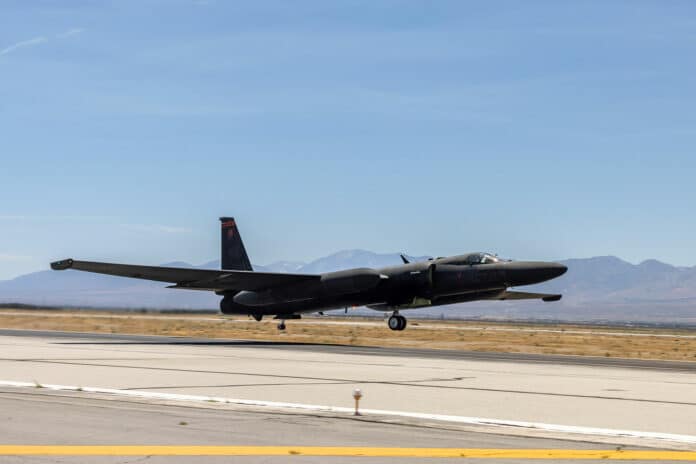In partnership with the U.S. Air Force, Skunk Works, Lockheed Martin‘s super-secret weapons facility, completed the first flight of the U-2 Dragon Lady with an upgraded avionics suite and cockpit displays.
First introduced in the summer of 1956, the U-2 Dragon Lady is a single-engine, high-altitude reconnaissance aircraft capable of flying above the reach of Soviet anti-aircraft fire. The U-2 borrowed its sleek looks from the profile of a traditional sailplane. Its long, tapered wing allowed it to fly missions covering a range of 3,000 miles and carry up to 700 pounds of the latest photoreconnaissance equipment.
It can fly at altitudes of 70,000 feet (21,300 meters) and provide day and night, all-weather intelligence gathering. This would enable the U-2 to fly at a height beyond the effective range of existing air defense systems.
In May 1960, the U-2 aircraft’s reputation as a reliable, long-serving aircraft with the U.S. Air Force was compromised when a Soviet missile shot down a U-2 flown by Gary Powers. However, the U-2 is still in service today, more than half a century later, with modernized versions that have improved avionics, sensors, and capabilities.
By flying at such high altitudes, the U-2 is a quickly deployable plane that has an electro-optical infrared camera, optical bar camera, and advanced synthetic aperture radar to simultaneously collect signals, imagery intelligence, and air samples of enemy territory.
Due to its challenging nature, flying the U-2 aircraft can be quite a task, particularly at lower altitudes. To ensure the aircraft remains serviceable, there is always room for improvement.
In 2020, the U.S. Air Force awarded an Avionics Tech Refresh (ATR) contract valued at $50 million to Lockheed Martin for upgrading the U-2. The ATR program includes a new mission computer designed for the U.S. Air Force’s open mission systems (OMS) standard that enables the U-2 to integrate with systems across air, space, sea, land, and cyber domains at disparate security levels.
Other advancements include an updated avionics suite (communications, navigation, display, etc.) that modernizes the U-2’s onboard systems to readily accept and use new technology. Another key feature is the modern cockpit with better digital displays designed to make pilot tasks easier while enhancing the presentation of the data the aircraft collects to enable faster, better-informed decisions.
During the first test flight, the aircraft successfully performed a low-altitude functional check flight to integrate new avionics, cabling, and software. Further testing will solidify a mature software baseline before mission systems are introduced to ensure both performance and compatibility to meet operational requirements.
“The successful first flight of the U-2 Avionics Tech Refresh is a significant moment in our journey to rapidly and affordably field new capabilities,” said Sean Thatcher, U-2 Avionics Tech Refresh program manager at Lockheed Martin Skunk Works. “Leveraging the platform’s open architecture, we’re expediting these capabilities needed for the future Joint All-Domain Operations battlespace.”
